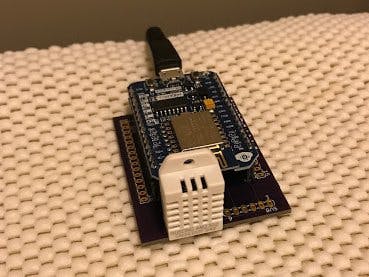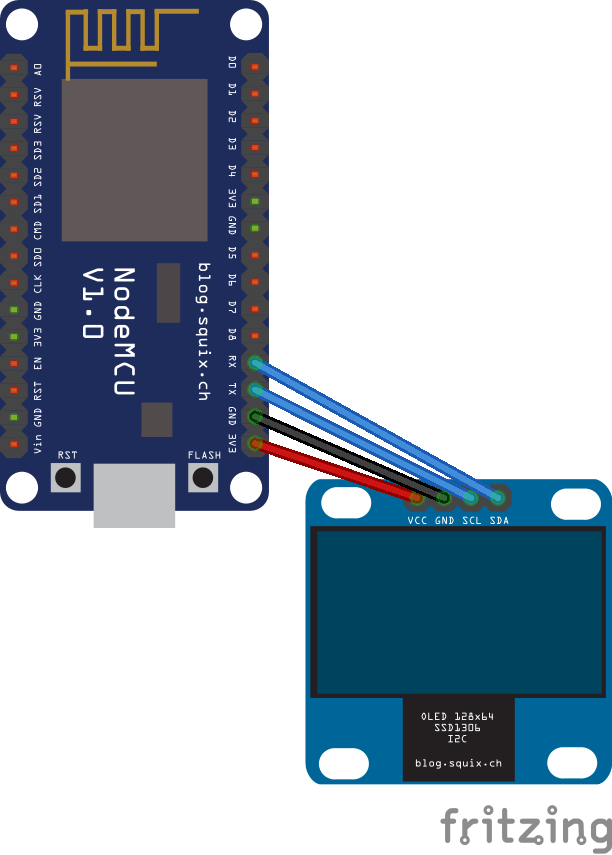Nevermind that this is a breakout board for a breakout board :) I have 20+ NodeMCUs around my house, sitting in every corner of my house, some reporting temperature and humidity (and/or motion) to my HA system (Link), others sitting in window sills and under kitchen cabinets, creating pretty light shows (Link).
After making the first few sensors on a protoboard (see Fig 1), I quickly realized making more of them would be tedious.
I knew I had to make my job easier, so I created a PCB in Eagle, incorporating the DHT22 wiring, and the deepsleep reset jumper. While in there, I also thought it'd be a good idea to add a row of breakout headers for prototyping (since NodeMCU v0.9 does not fit on a breadboard), and used the spare area under the NodeMCU to add space for a 4-channel level shifter. The first version of the finished board is shown in Fig 2 on the right.
The obvious next step in prettyfication (and increased Wife Approval Factor - WAF) for these sensors was to design a case for them (Figure 3). I couldn't help myself, and added an OLED screen for local temperature/humidity display, because...why not?!
While at it, I added provisions to the PCB to use a 3-pin header to connect external sensors (e.g. motion) or servo (using servo pinout of SIG-VCC-GND), and a jumper to select 3.3V or 5V to put on the VCC line. I also added a third set of headers, so that the thinner NodeMCU v1.0 could also fit on the same board. The finished (for now!) version of the PCB is shown in Figure 4.
Now, the cheapest I've been able to get these is on PCBWay, where I got 30 boards for ~$30 shipped (like literally, on a ship...), can't beat that!
I'm looking forward to using these in more projects/sensors/time-wasters, but I'm also excited to see if anyone finds a use for them, too!













Comments
Please log in or sign up to comment.